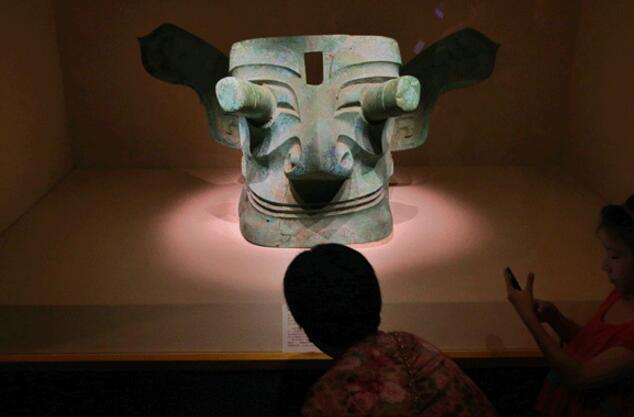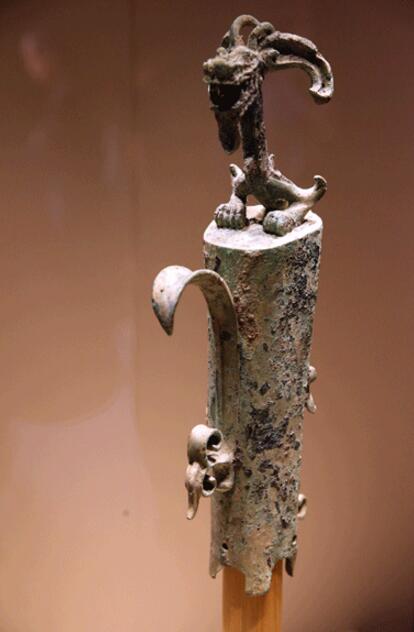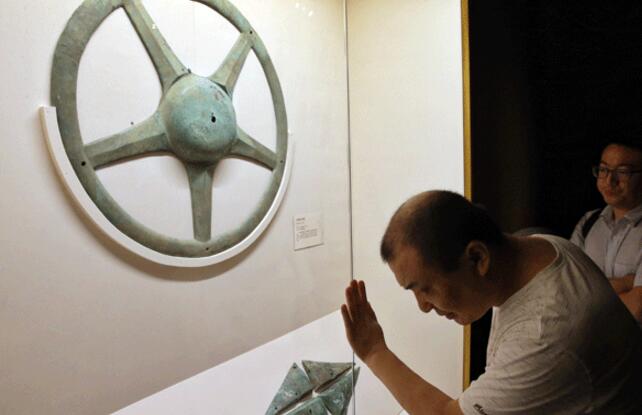Relics of mysterious ancient civilization shown in Beijing
Exquisite artifacts found in the 1980s at the Sanxingdui archaeological site in Southwest China's Sichuan province unveiled the face of the ancient State of Shu that could date to the early 18th century BC.

A bronze mask with exceptionally prominent eyes from the Sanxingdui culture is believed to have been made upon word-of-mouth descriptions of the founding fathers of the State of Shu, and was worshiped by the kingdom's people. [Photo by Jiang Dong/China Daily]

This bronze figure with a gold mask from the Sanxingdui culture may depict a member of high society who oversaw political, economic and military affairs. [Photo by Jiang Dong/provided to chinadaily.com.cn]
Further excavations at the nearby Jinsha and Qingyanggong relic sites provided modern scholars more evidence of the kingdom's emergence, development and gradual extinction in the mid-second century BC.
These enthralling objects meanwhile, bearing mysterious patterns, aroused both wide interest in and arguments over the messages they are carrying, especially when very few historic records about the State of Shu have been found, except for some brief folk tales.

A bronze cylinder is carved with a dragon head at its top. The dragon has curled horns and a long beard, which are rare in bronzeware of the same period. The cylinder could be the tip of a scepter. [Photo by Jiang Dong/provided to chinadaily.com.cn]

A bronze item shaped like the wheel of a car is one of the most mysterious objects found at the Sanxingdui site. After comparing it to artifacts excavated from the same site, archaeologists deduced that it may represent the sun and the rays surrounding it.[Photo by Jiang Dong/provided to chinadaily.com.cn]

A gold mask found at the Jinsha site was developed following the Sanxingdui culture. [Photo by Jiang Dong/provided to chinadaily.com.cn]
The findings and myths surrounding the ancient Shu culture are shared in Beijing at The Splendid Ancient Shu Civilization, an exhibition at the National Museum of China through Sept 19.
It brings together a selection of the finest examples unearthed from the Sanxingdui, Jinsha and Qingyanggong sites, which are loaned from nine museums and archaeological institutions in Sichuan.

